NEWS
Explore 23 of the World’s Most Beautiful Desert Landscapes
Published
2 months agoon
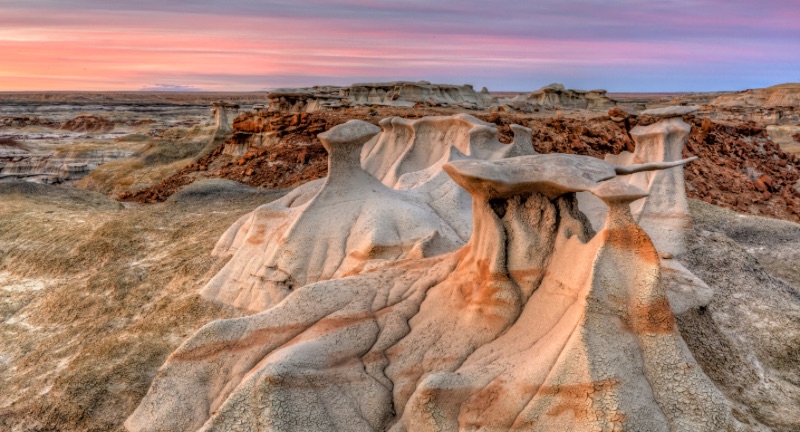
Shutterstock
Deserts might seem barren at first glance, but they hold incredible beauty and surprises. From rolling sand dunes that stretch as far as the eye can see to striking rock formations shaped by nature, each desert has its own unique charm. These landscapes are home to fascinating plants and animals that have adapted to thrive in extreme conditions.
The way light plays across the sand and rocks creates stunning views, especially during sunrise and sunset. Discovering the world’s most beautiful deserts reveals a side of nature that’s both resilient and breathtaking.
Sahara Desert, Africa
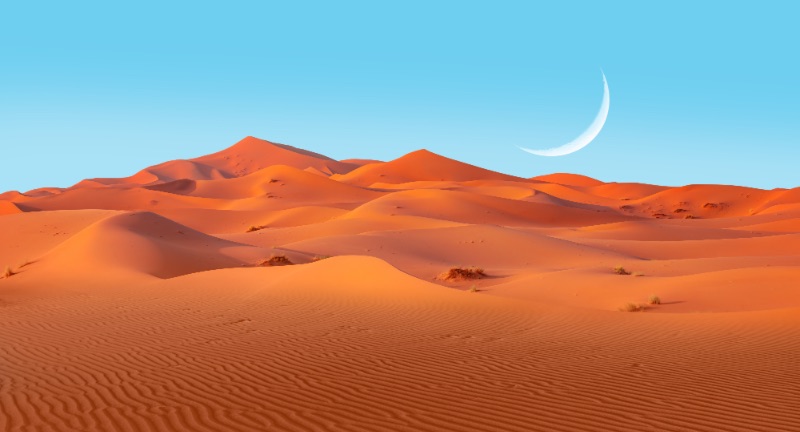
Shutterstock
The Sahara Desert is the largest hot desert in the world, covering over 9 million square kilometers across North Africa. Its expansive landscape is a mesmerizing mix of towering golden sand dunes, rugged mountain ranges like the Ahaggar, and vast gravel plains known as hamadas. Despite the extreme aridity, the Sahara supports resilient flora such as acacia trees and hardy fauna including the elusive fennec fox and the majestic addax. The desert’s dramatic sunsets, where the sky transforms into vibrant hues of orange and red, create unforgettable vistas that highlight its timeless beauty.
Arabian Desert, Middle East
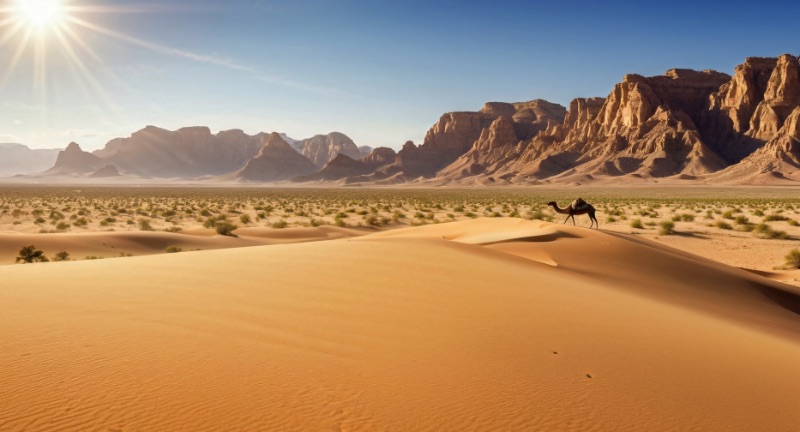
Shutterstock
Spanning much of the Arabian Peninsula, the Arabian Desert is renowned for its endless sea of rolling sand dunes and striking rock formations. The Rub’ al Khali, or Empty Quarter, is its most iconic region, featuring some of the highest and most expansive dunes on the planet. This desert is home to unique plant life like the date palm and hardy animals such as the Arabian oryx and sand gazelle, all adapted to survive the harsh conditions. Under the vast, clear night sky, the Arabian Desert offers unparalleled stargazing opportunities, showcasing the Milky Way in stunning detail.
Atacama Desert, Chile
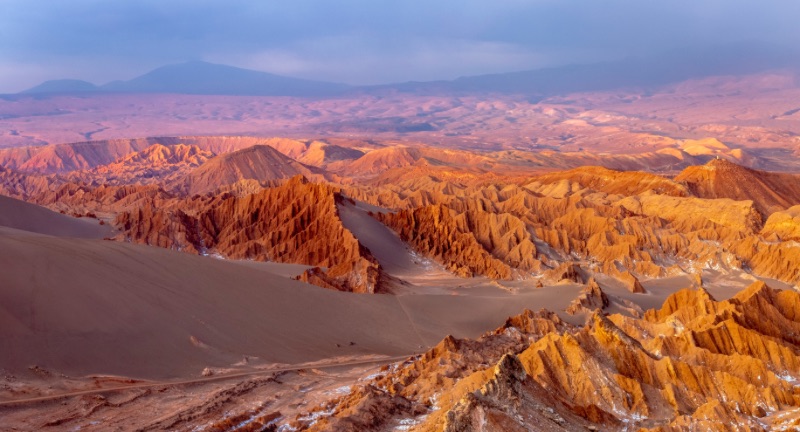
Shutterstock
The Atacama Desert in Chile is one of the driest places on Earth, with certain areas experiencing virtually no rainfall for centuries. Its otherworldly landscapes include expansive salt flats, vibrant colored lagoons, and towering geysers that add to its lunar-like appearance. Despite the extreme dryness, specialized flora such as various cacti and fauna like the Andean fox have adapted to thrive in this environment. The Atacama’s exceptionally clear skies make it a premier location for astronomical observatories, attracting scientists and stargazers alike.
Gobi Desert, Mongolia and China
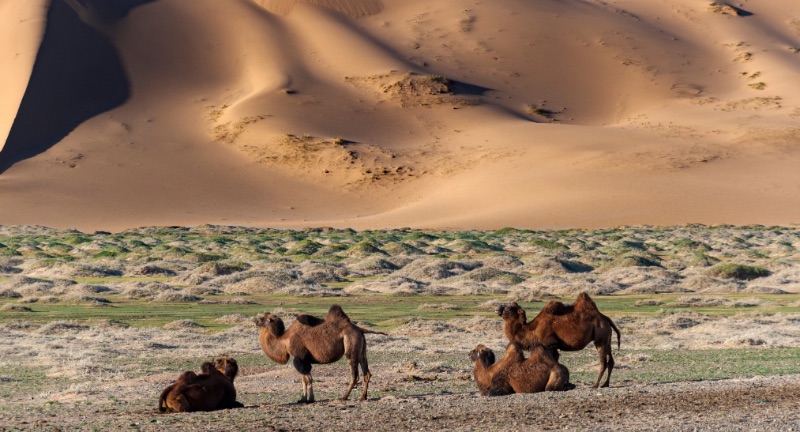
Shutterstock
The Gobi Desert stretches across northern China and southern Mongolia, distinguished by its unique combination of bare rock formations and sandy expanses. Unlike typical deserts, the Gobi experiences extreme temperature fluctuations, with scorching hot days and freezing cold nights. Hardy vegetation like the saxaul tree and remarkable fauna such as the snow leopard and Bactrian camel are well-adapted to its challenging environment. The vast, unspoiled landscapes of the Gobi offer breathtaking panoramas and a sense of profound isolation, making it a haven for nature enthusiasts and adventurers.
Mojave Desert, USA
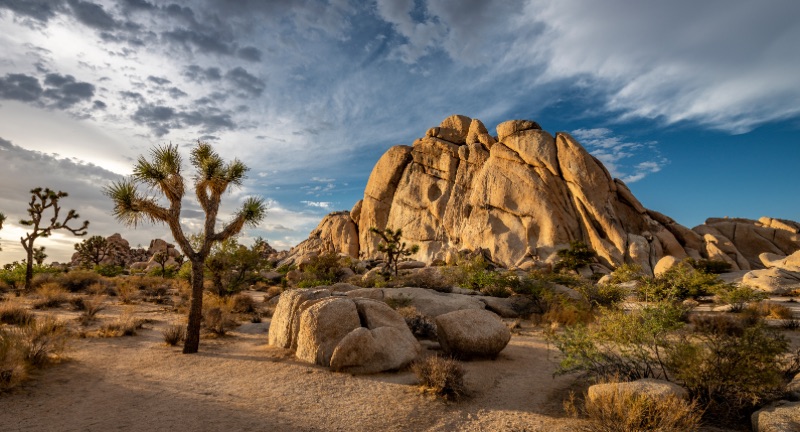
Shutterstock
Situated in the southwestern United States, the Mojave Desert is famous for its iconic Joshua Trees, which add a distinctive silhouette to the arid horizon. The desert’s diverse terrain encompasses sweeping sand dunes, rugged rocky plateaus, and deep, winding canyons that reveal layers of geological history. Wildlife such as the desert tortoise, kit fox, and various lizard species have adapted to survive in this harsh climate. Each spring, the Mojave Desert bursts into vibrant wildflower blooms, transforming the stark landscape with bursts of color and attracting visitors from around the world.
Namib Desert, Namibia
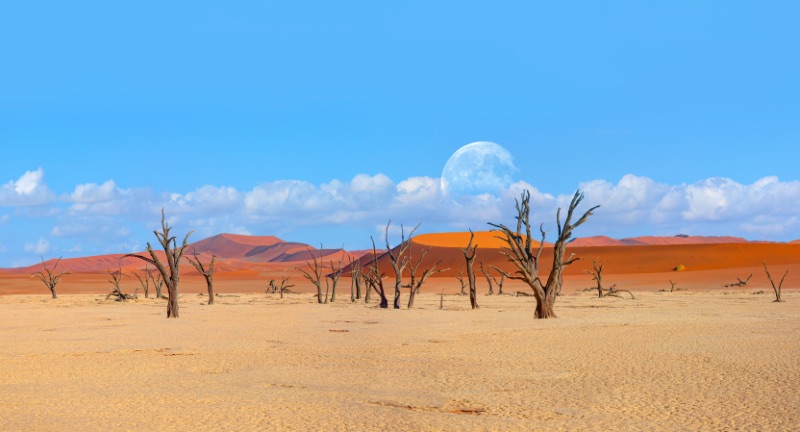
Shutterstock
The Namib Desert, one of the oldest deserts on Earth, stretches along Namibia’s Atlantic coast and is renowned for its towering red sand dunes that dramatically meet the ocean. Its unique coastal environment features fog-fed vegetation, including the iconic welwitschia plant, and striking rock formations like the famous Sossusvlei. Adapted fauna such as the oryx, desert-adapted elephants, and various bird species thrive in this seemingly inhospitable landscape. The Namib’s dramatic scenery, especially during sunrise and sunset, offers stunning photographic opportunities and a profound sense of natural beauty.
Kalahari Desert, Southern Africa
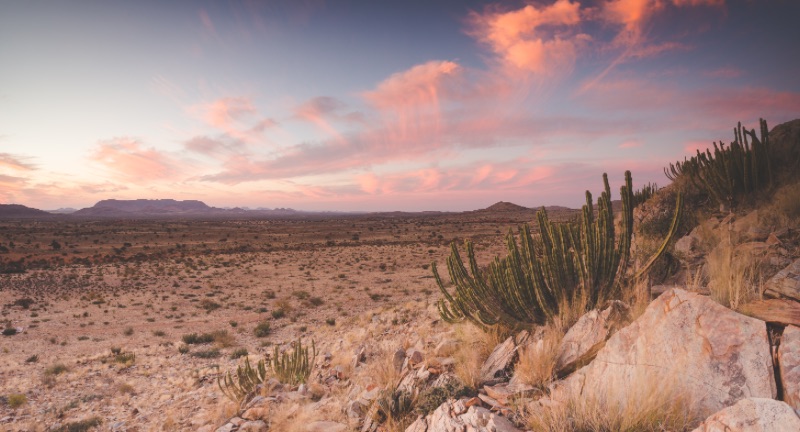
Shutterstock
Covering parts of Botswana, Namibia, and South Africa, the Kalahari Desert is a vast semi-arid region rich in biodiversity and cultural heritage. Its sandy plains are interspersed with hardy vegetation like mopane trees and acacia bushes, providing habitat for a wide range of wildlife including lions, meerkats, and the iconic black-maned Kalahari lions. Traditional San communities, known for their deep knowledge of the land, live sustainably within the Kalahari’s unique ecosystem, maintaining their cultural practices and traditions. The desert’s expansive horizons and vibrant sunsets create a stunning natural wonder that captivates all who visit.
Thar Desert, India and Pakistan
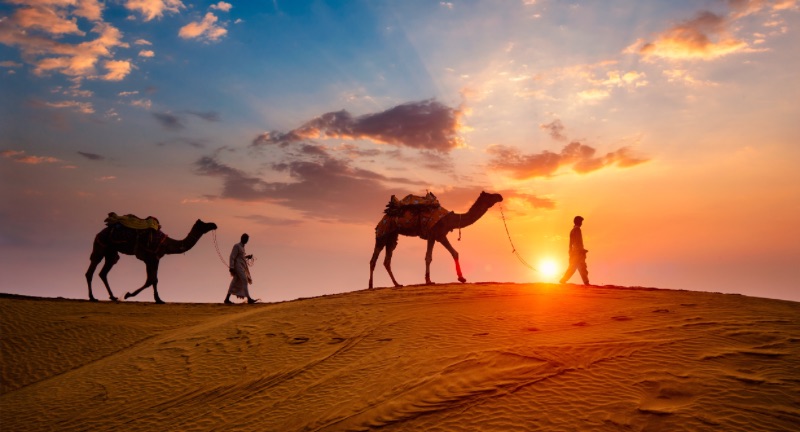
Shutterstock
The Thar Desert, also known as the Great Indian Desert, stretches across western India and eastern Pakistan, encompassing a diverse landscape of expansive sand dunes, rocky outcrops, and sparse vegetation. This desert is home to unique species such as the desert fox, Indian bustard, and various reptiles that have adapted to survive the extreme dryness and temperature variations. The Thar Desert is also rich in cultural heritage, with vibrant festivals, traditional music, and colorful handicrafts that reflect the resilience and creativity of its inhabitants. The blend of natural beauty and cultural richness makes the Thar Desert a fascinating destination for travelers and researchers alike.
Sonoran Desert, USA and Mexico
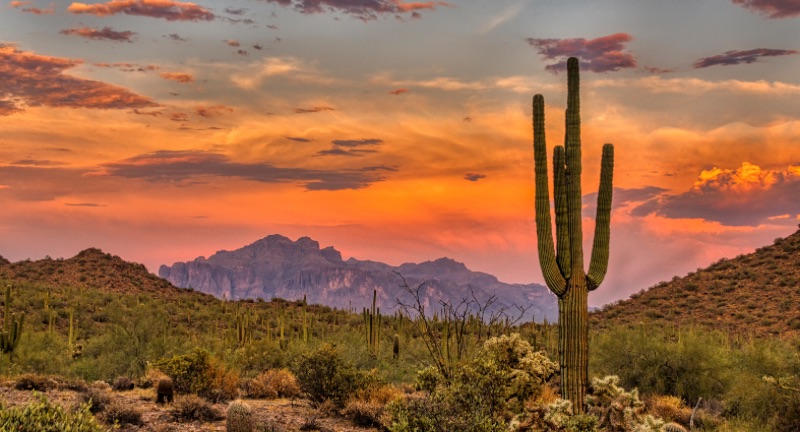
Shutterstock
The Sonoran Desert spans southwestern United States and northwestern Mexico, celebrated for its extraordinary biodiversity and iconic flora. Dominated by towering saguaro cacti, the landscape also features unique plants like the ocotillo and creosote bush, creating a vivid and diverse ecosystem. Wildlife in the Sonoran includes the desert bighorn sheep, vibrant hummingbirds, and numerous reptiles, all thriving in this arid environment. The desert’s varied terrain, which includes sand dunes, rugged mountains, and serene valleys, offers stunning vistas that change with the seasons, making it a year-round attraction.
Great Victoria Desert, Australia
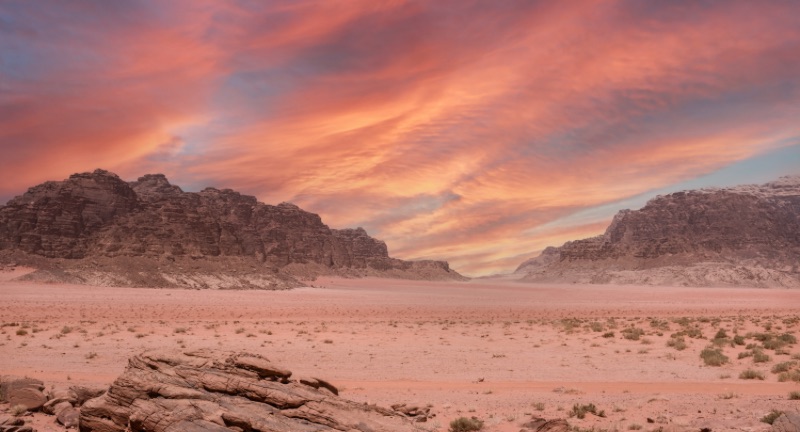
Shutterstock
As Australia’s largest desert, the Great Victoria Desert spans over 348,750 square kilometers, featuring vast sandhills, expansive gravel plains, and unique granite rock formations that add texture to its arid landscape. The desert supports hardy plant species such as spinifex grasses and diverse fauna including the bilby, thorny devil lizard, and various bird species adapted to the harsh conditions. Indigenous communities have inhabited the Great Victoria Desert for thousands of years, preserving their cultural heritage and traditional knowledge of the land. The region’s remote and serene expanses offer a pristine and untouched natural beauty, ideal for those seeking solitude and adventure.
Dasht-e Lut, Iran
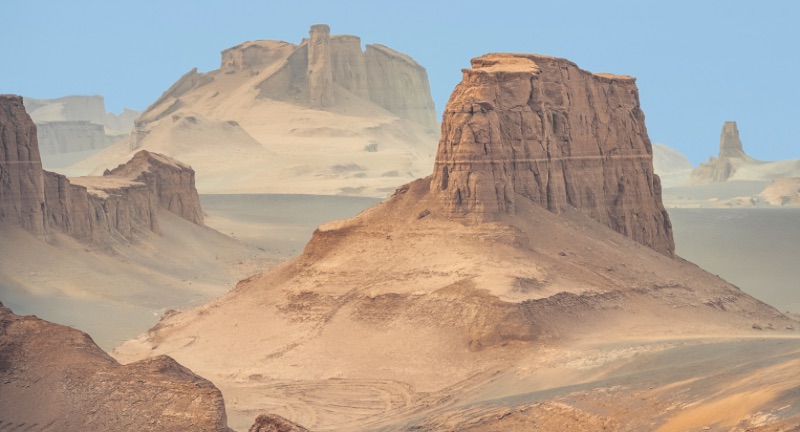
Shutterstock
Dasht-e Lut, a UNESCO World Heritage site in Iran, is renowned for its otherworldly landforms, including vast sand seas, jagged salt flats, and dramatic volcanic features. Temperatures in this desert can reach extreme highs, shaping unique geological structures such as yardangs and ventifacts that showcase the power of wind erosion. Despite the harsh conditions, specialized life forms like the Lut Desert lizard and various hardy plants manage to survive in this unforgiving environment. The stark and mesmerizing beauty of Dasht-e Lut offers a glimpse into one of Earth’s most extreme and fascinating landscapes.
White Sands Desert, USA
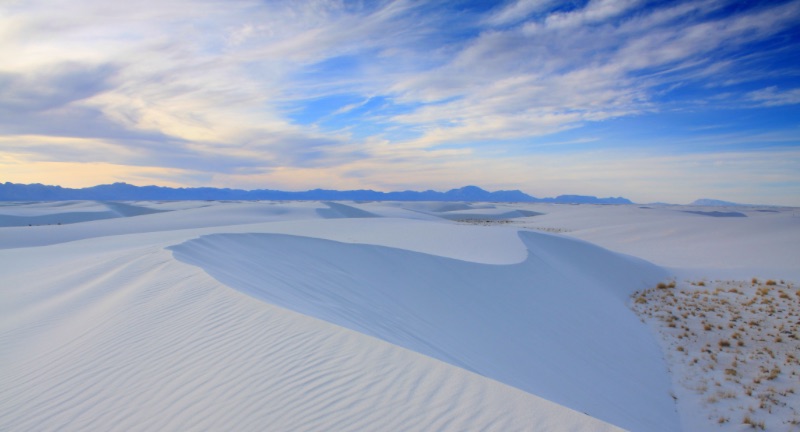
Shutterstock
Located in southern New Mexico, the White Sands Desert is famous for its stunning gypsum sand dunes that create a dazzling, snow-white landscape. The contrast between the bright sands and the clear blue sky is visually striking, making it a popular destination for photographers and nature enthusiasts. Unique flora such as the lechuguilla plant and fauna like the white sand flea have adapted to thrive in this bright and reflective environment. The serene beauty and unusual color palette of White Sands Desert provide a peaceful and captivating experience for all who visit.
Simpson Desert, Australia
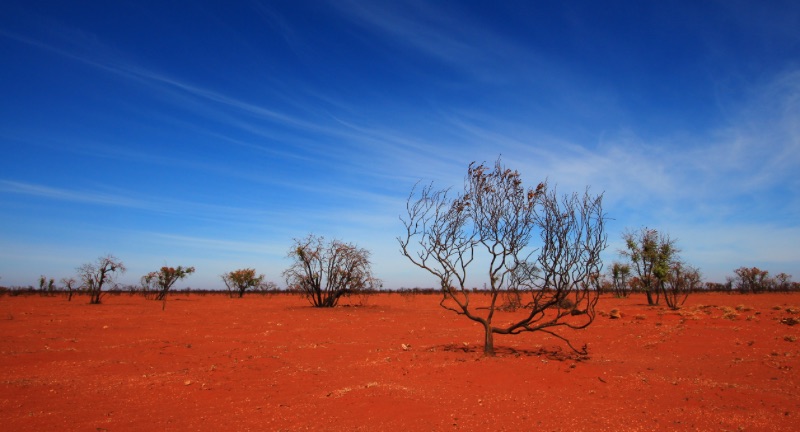
Shutterstock
The Simpson Desert is characterized by its vast red sand dunes and the iconic parallel dune formations that stretch across parts of Queensland, South Australia, and the Northern Territory. Covering approximately 176,500 square kilometers, it offers endless horizons and pristine wilderness that remain largely untouched by modern development. Adapted vegetation like the mulga shrub and resilient animals such as the dingo and the rare marsupial mole thrive in this arid landscape. The Simpson Desert’s remote beauty and challenging terrain attract adventurers and explorers seeking to experience Australia’s diverse natural environments.
Chihuahuan Desert, USA and Mexico
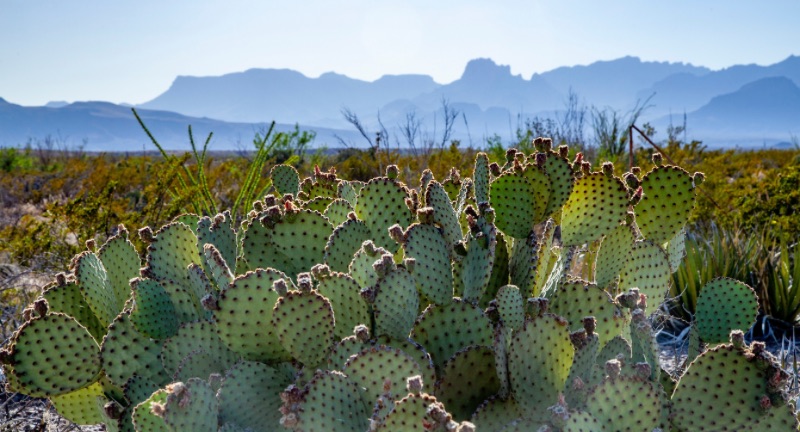
Shutterstock
Stretching across the southwestern United States and northern Mexico, the Chihuahuan Desert is one of the most biologically diverse deserts in the world. Its varied landscape includes rocky canyons, sweeping sand dunes, and lush desert grasslands, providing habitats for a wide array of plant and animal species. Unique flora such as the agave and organ pipe cactus coexist with fauna like the Mexican gray wolf, javelina, and numerous bird species. The Chihuahuan Desert is also known for its vibrant wildflower displays in spring and stunning sunsets that enhance its natural splendor.
Tanami Desert, Australia
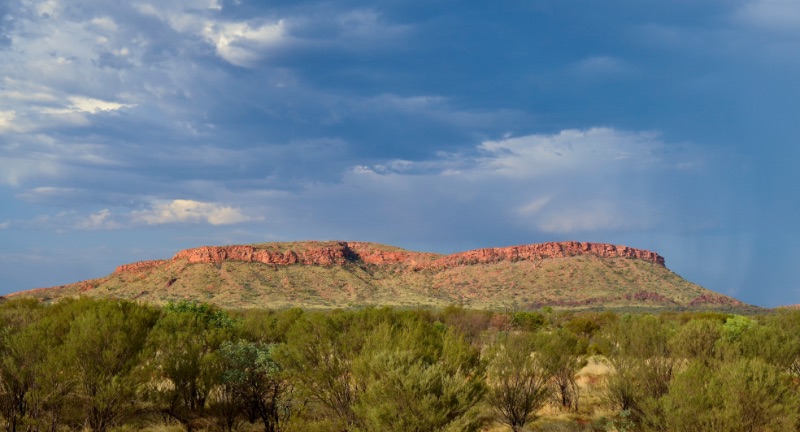
Shutterstock
Located in the Northern Territory, the Tanami Desert is a vast expanse of sand plains, rocky outcrops, and scattered eucalyptus trees that define its rugged landscape. This harsh environment supports resilient plant species like spinifex grasses and hardy animals such as the bilby and the red kangaroo. The Tanami Desert holds significant cultural importance for the indigenous Pintupi people, who maintain their traditions and deep connection to the land. Its remote and untouched beauty offers a glimpse into Australia’s pristine wilderness, attracting those who seek solitude and natural splendor.
Patagonian Desert, Argentina
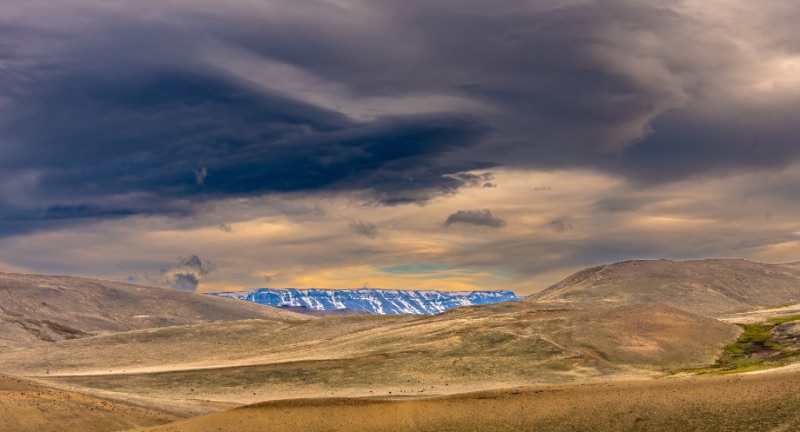
Shutterstock
The Patagonian Desert, also known as Monte Desert, is Argentina’s largest desert, covering over 1 million square kilometers in the southern part of the country. Its striking landscapes feature arid plains, expansive sand dunes, salt flats, and unique rock formations that create a visually captivating environment. Adapted vegetation like various cacti and hardy shrubs support fauna such as the guanaco, foxes, and numerous bird species. The Patagonian Desert’s dramatic scenery provides a stark contrast to the lush regions surrounding it, offering a unique and captivating natural experience.
Taklamakan Desert, China
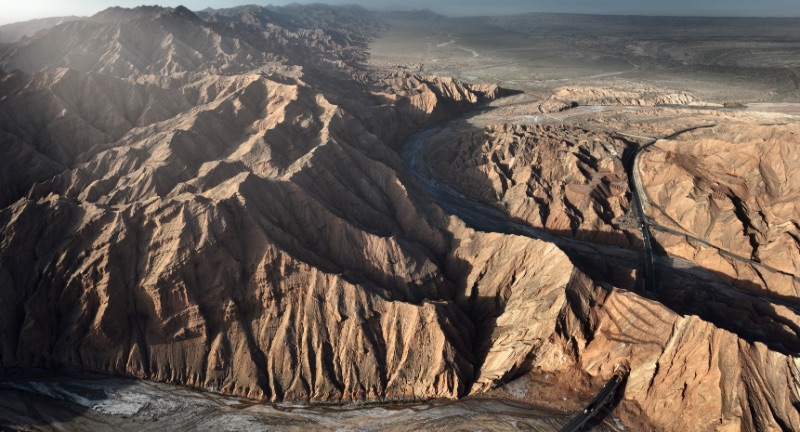
Shutterstock
Situated in the heart of the ancient Silk Road, the Taklamakan Desert is one of the largest sandy deserts in the world, covering approximately 337,000 square kilometers in western China. Its vast expanse of shifting dunes is interspersed with fertile oases that sustain life in this otherwise harsh region. Flora such as the Tamarisk tree and fauna like the Bactrian camel are well-adapted to survive the extreme conditions of the Taklamakan. The desert’s remote and enigmatic beauty continues to inspire explorers and adventurers, drawing those fascinated by its storied history and formidable landscapes.
Karakum Desert, Turkmenistan
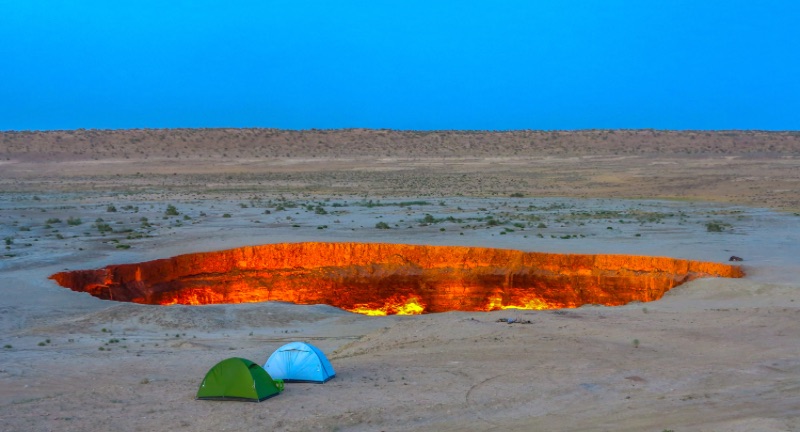
Shutterstock
The Karakum Desert covers much of Turkmenistan, spanning over 350,000 square kilometers with endless sand dunes and expansive salt flats that define its stark landscape. One of its most notable landmarks is the Darvaza Gas Crater, also known as the “Door to Hell,” a natural gas field that has been burning continuously since 1971, creating a mesmerizing blue flame visible from miles away. Despite the extreme aridity, vegetation such as the saxaul tree and wildlife like the goitered gazelle have adapted to thrive in the Karakum’s harsh environment. The desert’s unique and dramatic landscapes offer a striking example of Central Asian desert beauty, attracting curious travelers and scientists alike.
Great Sandy Desert, Australia
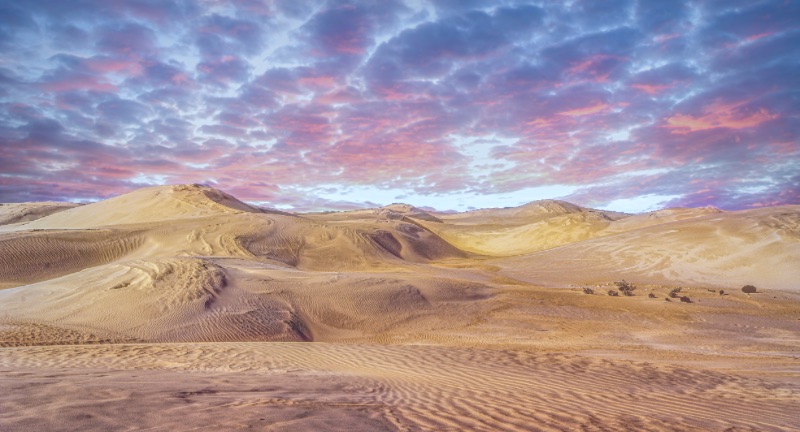
Shutterstock
The Great Sandy Desert, Australia’s second-largest desert, spans over 284,000 square kilometers in Western Australia, characterized by its vast red sand dunes, spinifex grasslands, and scattered rocky outcrops. This arid region supports unique flora such as the desert holly and fauna including the thorny devil lizard, which is known for its intricate patterns and ability to collect water. Indigenous communities have long inhabited the Great Sandy Desert, maintaining their cultural heritage and traditional knowledge of the land. The desert’s expansive beauty is both serene and awe-inspiring, offering a pristine and untouched environment for those seeking natural tranquility.
Negev Desert, Israel
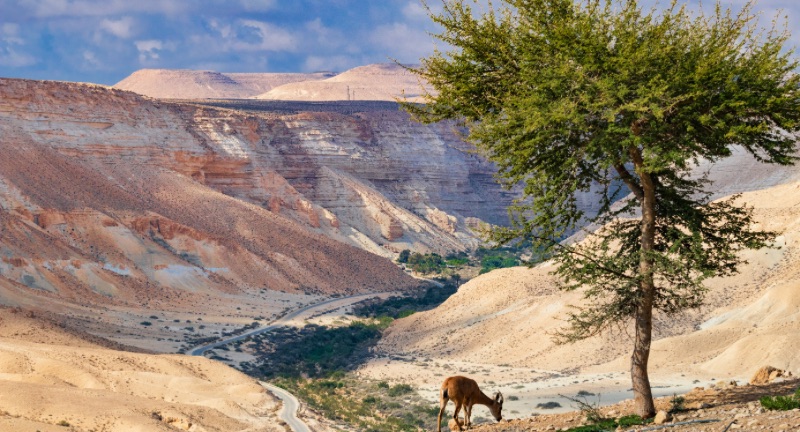
Shutterstock
The Negev Desert covers more than half of Israel, showcasing a range of dramatic landscapes including towering sandstone cliffs, deep canyons, and undulating sand dunes. It is home to unique flora such as the black iris and fauna like the Nubian ibex, which navigate the rugged terrain with agility. The Negev is rich in historical and archaeological sites, including ancient fortresses and Nabatean ruins that add a cultural dimension to its natural beauty. As the sun sets over the Negev Desert, the golden light casts long shadows and highlights the stunning geological formations, creating a mesmerizing and unforgettable experience.
Dasht-e Kavir, Iran
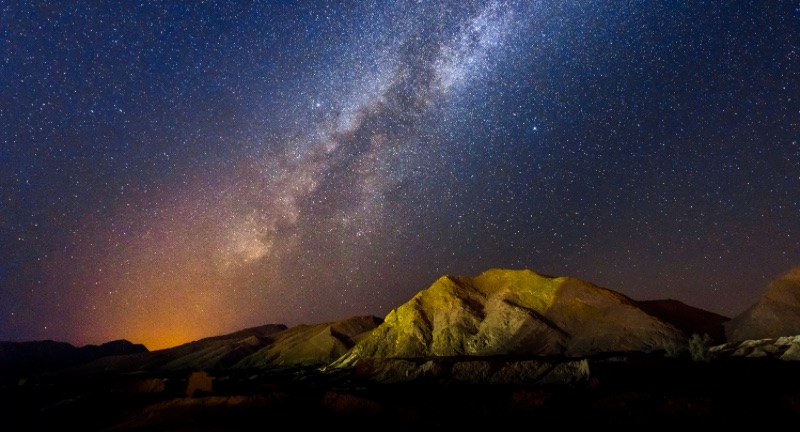
Shutterstock
Dasht-e Kavir, also known as the Great Salt Desert, is Iran’s largest desert, encompassing approximately 77,600 square kilometers of vast salt flats, towering sand dunes, and unique geological formations. The extreme temperatures and arid conditions make it a challenging environment for life, yet specialized plants like the tamarisk and fauna such as the Persian gazelle have adapted to survive here. The shimmering salt crusts and rugged landscapes of Dasht-e Kavir create a mesmerizing and otherworldly beauty that captivates all who visit. This remote and striking desert remains one of Iran’s most remarkable and untouched natural wonders, offering a glimpse into the country’s diverse and dramatic landscapes.
Painted Desert, USA
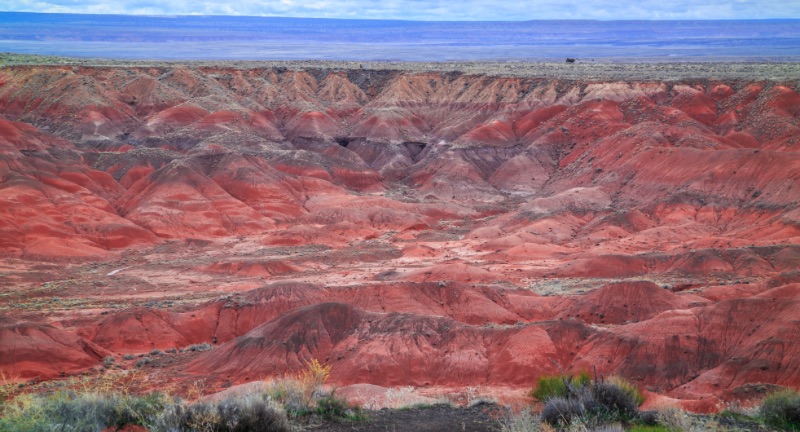
Shutterstock
Located in northern Arizona, the Painted Desert is renowned for its vibrant, multicolored layers of clay, silt, and sand that create a visually stunning and ever-changing landscape. The interplay of reds, oranges, yellows, and purples in the earth tones shifts throughout the day as the sunlight moves, offering a dynamic and captivating display of natural artistry. Unique vegetation such as desert shrubs and wildlife like mule deer and various bird species inhabit the area, adding life to the colorful scenery. The Painted Desert’s rich palette and scenic beauty make it a favorite destination for photographers, artists, and nature enthusiasts seeking to capture its mesmerizing colors and textures.
Colorado Plateau, USA
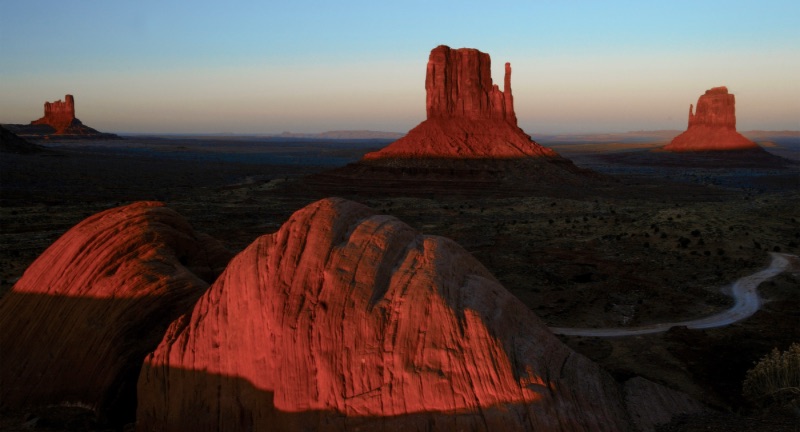
Shutterstock
The Colorado Plateau spans parts of Utah, Arizona, Colorado, and New Mexico, featuring some of the most iconic desert landscapes in the United States, including the Grand Canyon and Monument Valley. Its dramatic sandstone formations, deep canyons, and expansive mesas showcase the natural beauty and geological diversity of arid environments. Diverse flora such as pinyon pines and fauna like the desert bighorn sheep thrive in this region, adapting to the rugged terrain and varying climates. The Colorado Plateau’s breathtaking scenery attracts millions of visitors each year, drawn to its stunning vistas, recreational opportunities, and the profound sense of awe it inspires.
Conclusion
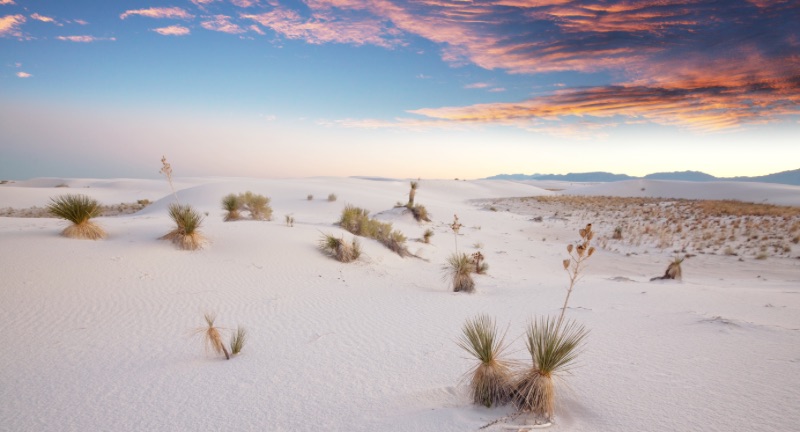
Shutterstock
Deserts are truly amazing places that offer so much more than just sand and heat. Each one has its own unique look and special plants and animals that have found ways to survive in tough conditions. From the huge dunes of the Sahara to the colorful skies of the Painted Desert, these areas are full of natural beauty that can take your breath away. Whether you love traveling, nature, or just want to learn something new, exploring these beautiful deserts is a fantastic experience.
More From Bon Voyaged
-


Starbucks to Officially Exit Russia
-
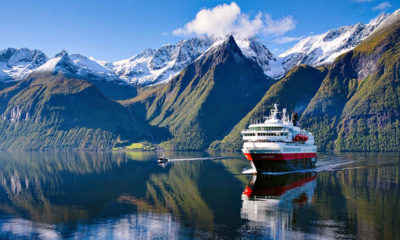
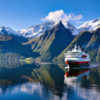
Cruise Line Vows to Power Ships with Dead Fish
-


Bunk Beds Are Coming to Economy Flights on This Airline
-


Tourist Trying to Snap Perfect Selfie Attacked by Crocodile
-
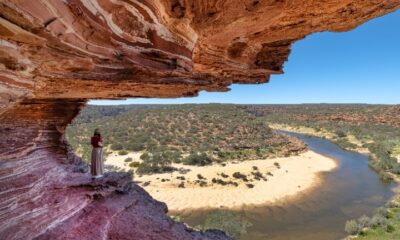

18 Surprising Differences Between Life in Australia and The U.S.
-


‘Encanto’s’ Mirabel Set to Make Disney World Debut
-


The Obama’s Head Off to the British Virgin Islands for…
-


22 Things Europe Does Differently Than the U.S.
-


Rome Banning Souvenir Stalls
-


Coronavirus Infects 174 Passengers on Quarantined Cruise Ship
-


Tourist Killed in Fatal Bahamas Shark Attack
-
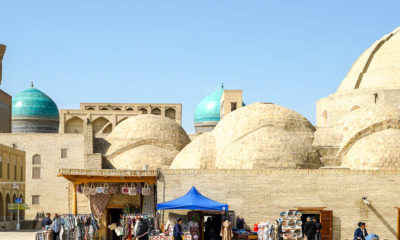

Uzbekistan Opens to Travelers With a $3,000 COVID-19 Guarantee

